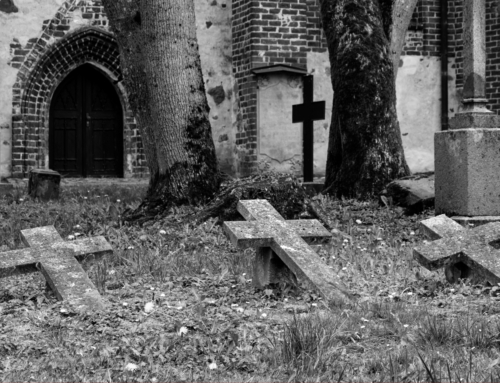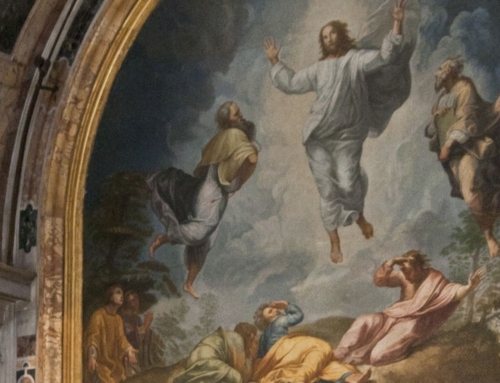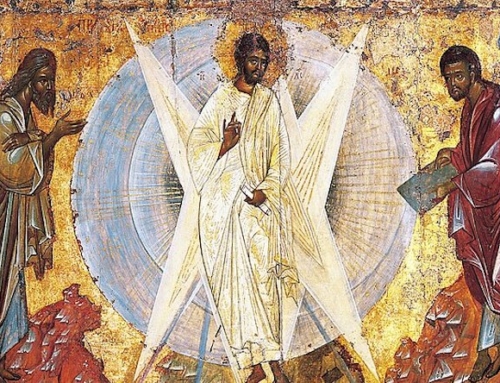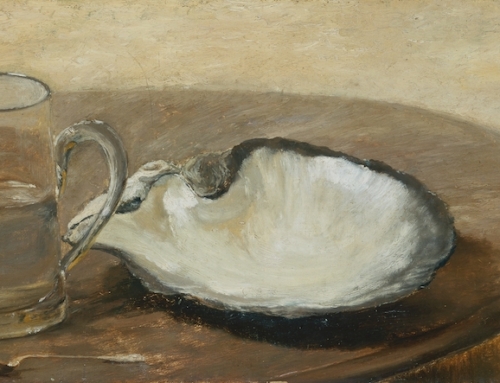The Lord is on my head like a crown,
And I shall never be without Him.
They have woven for me a crown of truth,
And it caused Your branches to blossom in me.
For it is not like a parched crown that blossoms not;
For You live upon my head,
And have blossomed upon me.
Your fruits are full and complete;
They are full of Your salvation…
This is from the Odes of Solomon, written in the first centuries after Christ. What greater treasure is there in this life than the blessings it describes? Something as simple as having Christ always with us, as a crown which we wear, as a friend at our side. I think of the prayer St. Patrick’s Breatstplate, as well as the final scene of Terrence Malick’s To The Wonder, which adapts that prayer and is the only movie I know of which literally turns into a prayer, then ends.
Christ is with us today, because he is risen, because he still lives.
Gentle though this may be to affirm now, centuries later, it was all a touch more dramatic when it actually happened. How charged were those days with fear and disappointment, then suddenly with surprise and ecstasy, when he walked right through the closed doors that Sunday evening, and said very simply, “Peace be with you.”
But this of course is already late in the course of that day’s events. Early in the morning, when it was still dark, the women were the first to see the risen Christ. Mary Magdalene and the other Mary, the last ones keeping watch at his tomb, then departing for home at sundown… those same ones who hid themselves all of Saturday then stirred and arose early on Sunday, laden with spices, hurrying to anoint his body. After they find his tomb empty, he meets them along the road, and they fall on the ground to grasp and kiss his feet, with words full of tears, “Lord, Lord, Lord, Lord…” (as I once saw in a theater production).
These women fascinate anyone who investigates their hearts. Deep down, what do they expect as they go to anoint his body? That he will rise? Or do they go as Antigone, wild to merely fulfill burial customs? To many, Jesus was a dead Christ, a failed Christ, another Christ among many, who also didn’t restore Israel and had been forgotten ever since.
Their mere presence on the road that morning bespeaks a devotion to him whom they still love and can’t quite believe is gone. But in their hands are burial spices, which bespeak an acceptance that, yes, he is dead. We cannot know exactly what was in their hearts during those moments. It seems they love Jesus so much, that even if he was dead and that was all, they will honor him and care for him in any way they know how.
We might call this “dead faith,” except that the Church has long used the vocabulary for something different: someone who sins and loses grace, but without losing faith in Christ. It’s not enough to get into heaven, but it’s a beautiful and basic theology, and it occurs in most Christians at times in their life. These women, in a different way, have a sort of enduring faith in a dead Christ and are rewarded by meeting the living Christ. Unlike a modern agnosticism which shrugs off the tough questions, theirs is an unknowing which does something. Dead or alive, they seek him. They seek him because they love him.
May everyone who, in our time presently, is uncertain of Christ be aided by the prayers of these holy women. May they be spurred on to seek Christ, that in seeking they may find. And he will crown them too with the gentle gift of faith, assuring them that he still lives, that he is always with them.
✠






